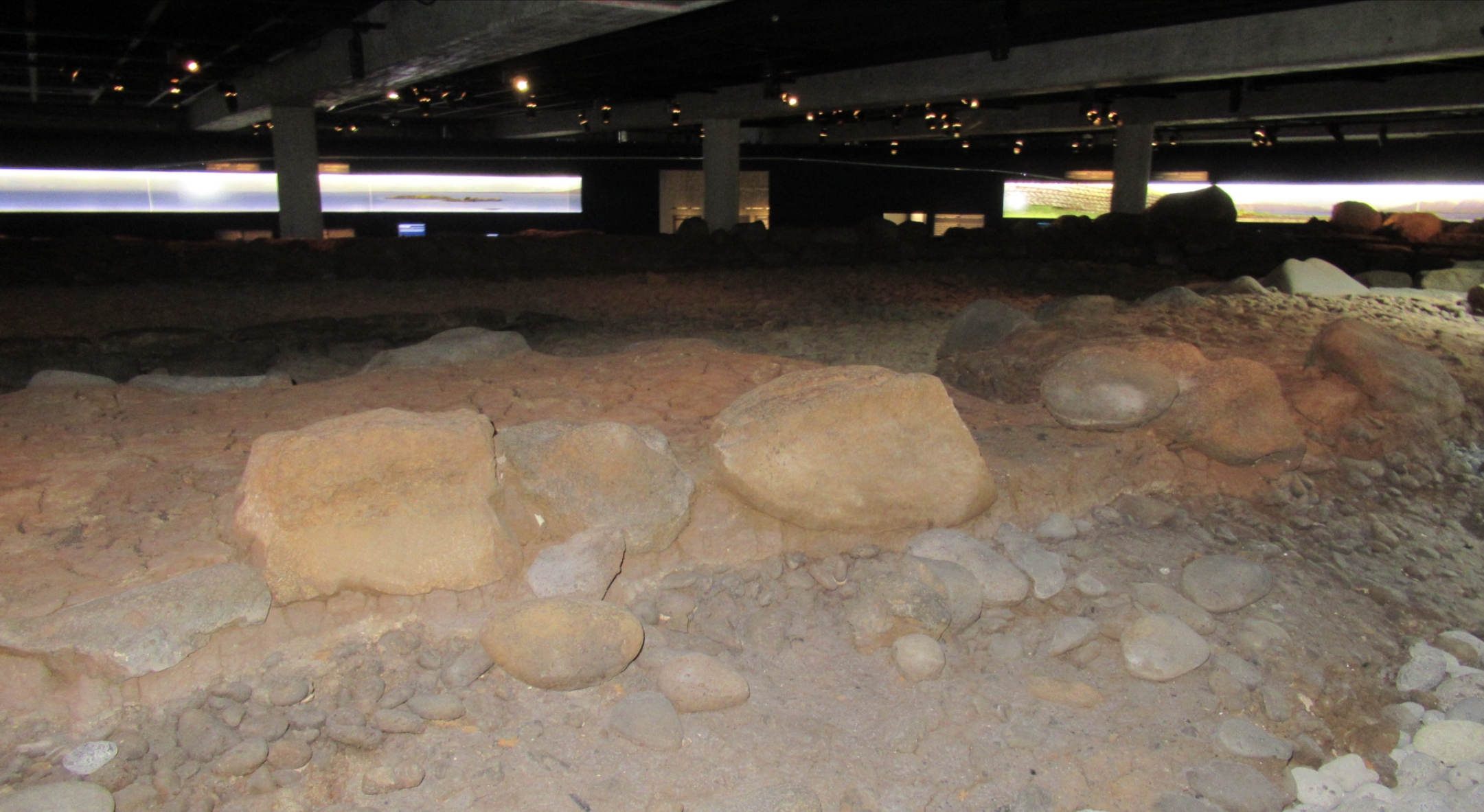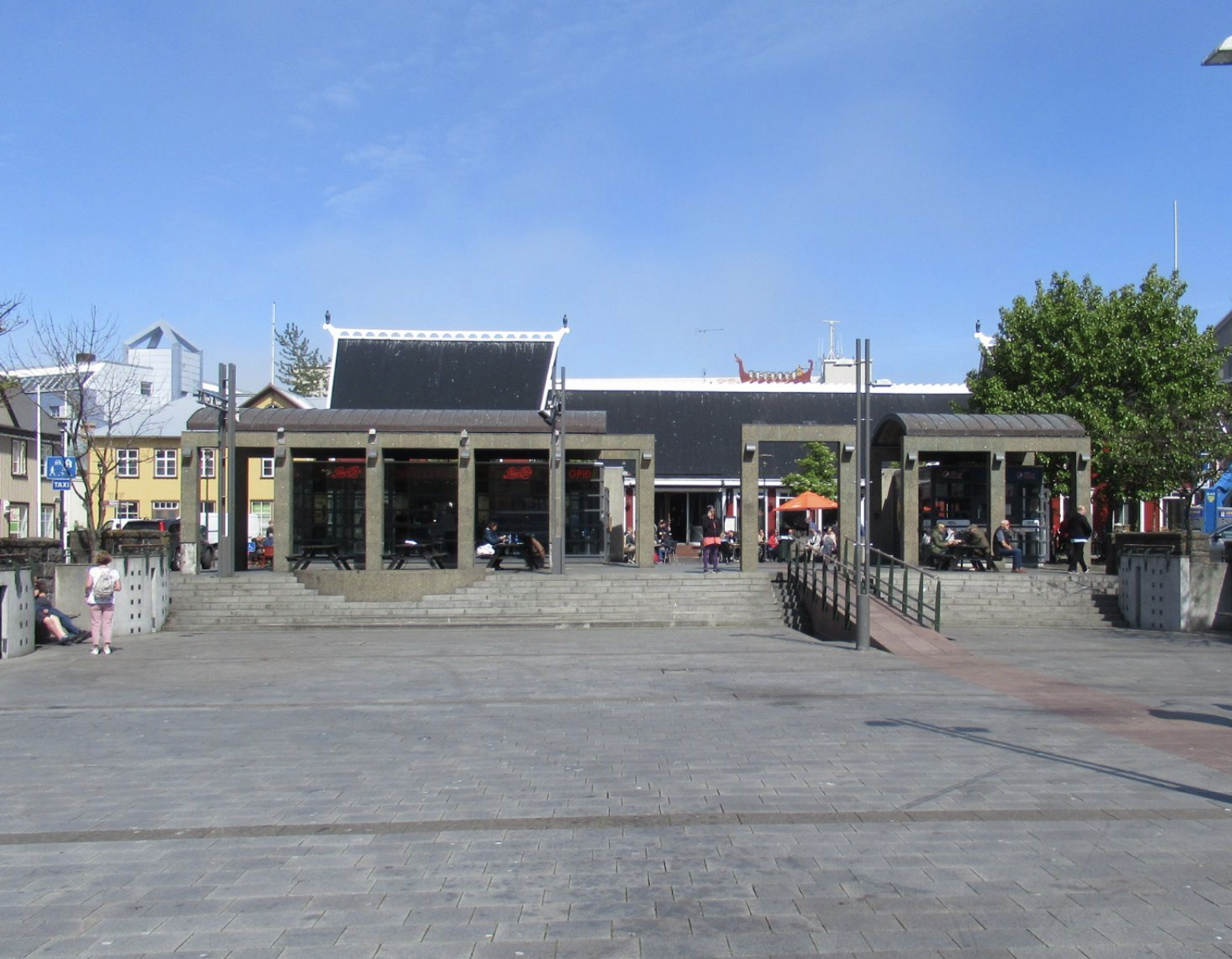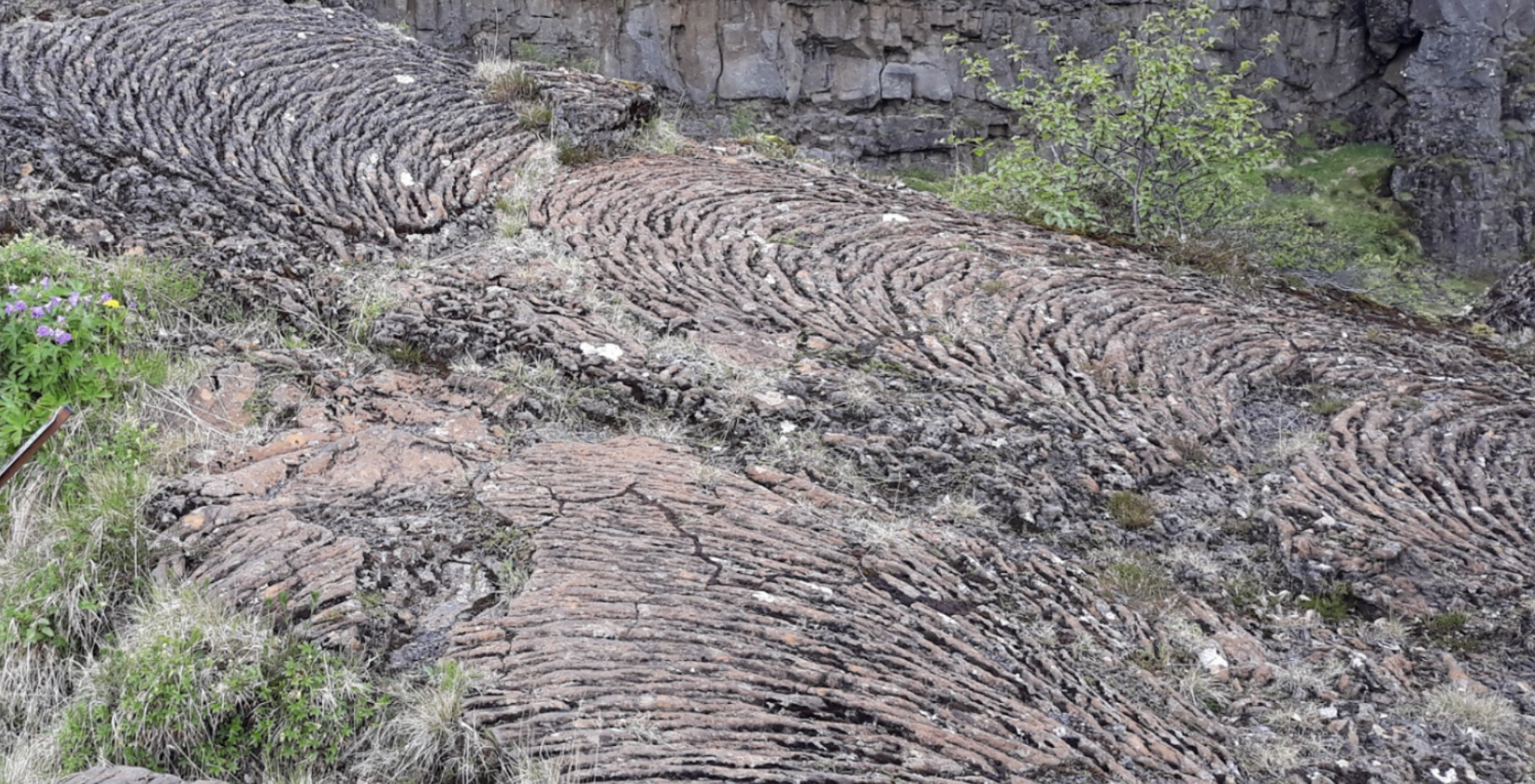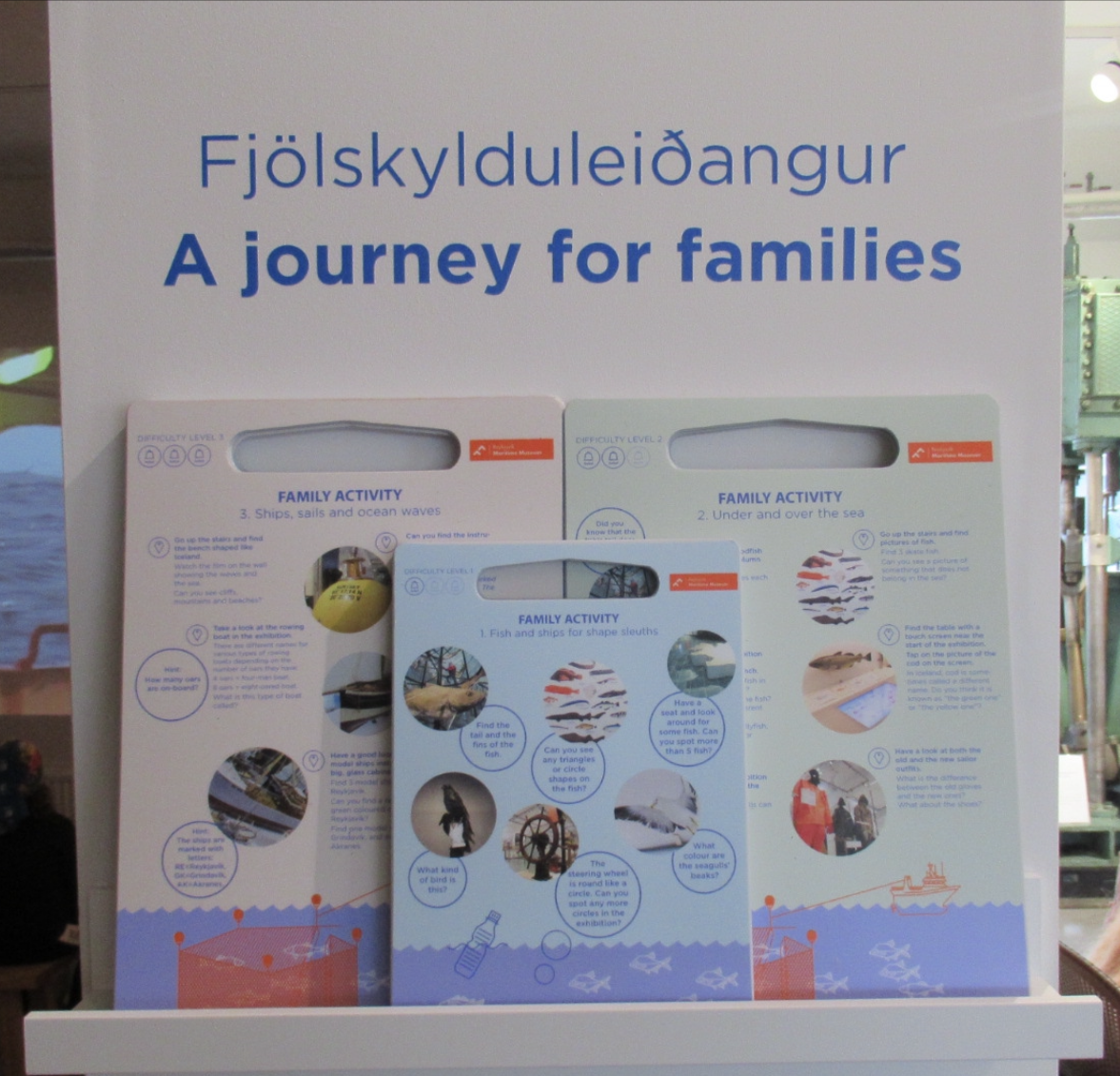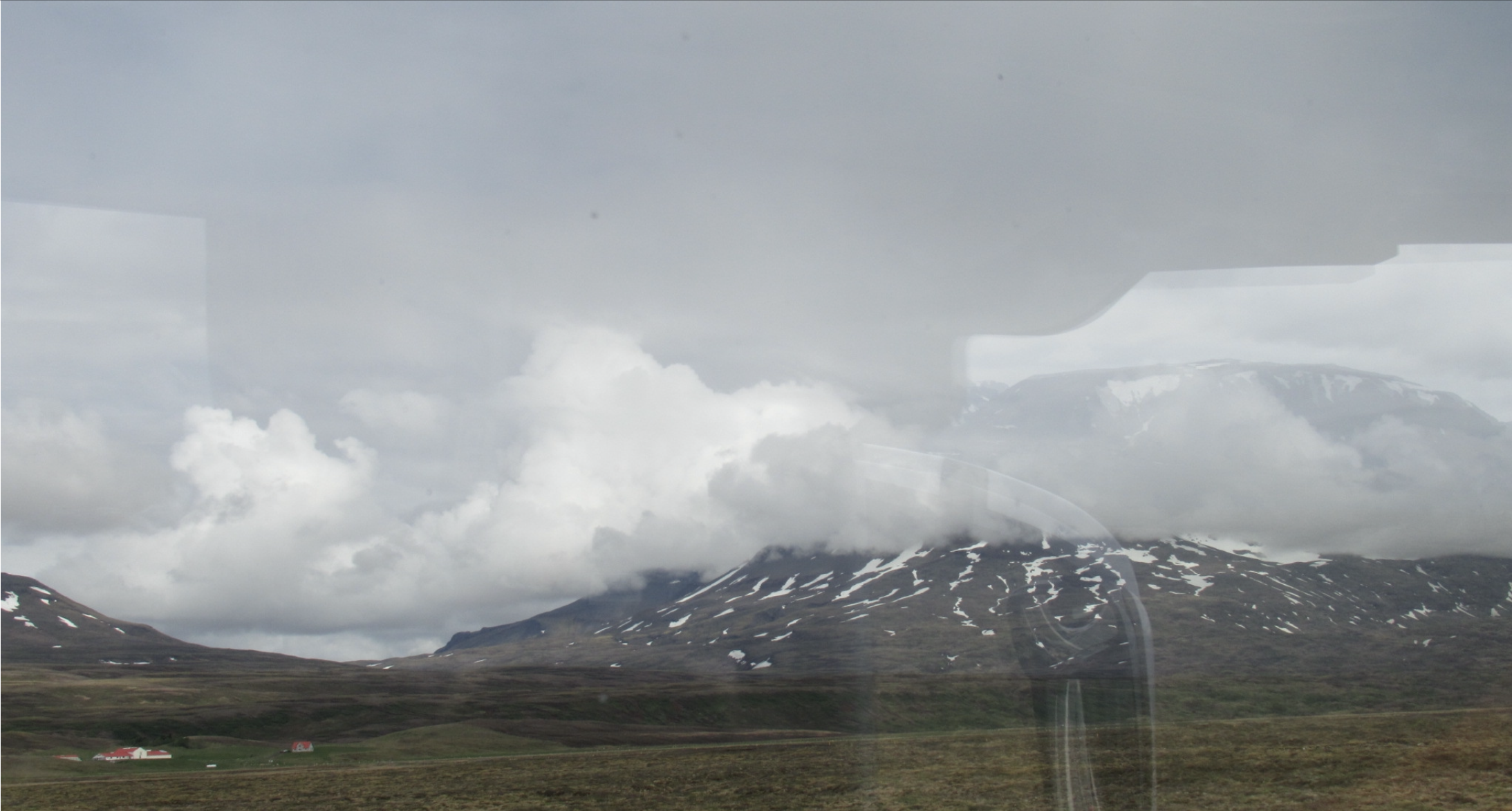The day started after a good night’s sleep, a filling breakfast, and an email to my hearing aid provider. Today was museum day, with The National Museum of Iceland and The Settlement Exhibition in our sights.
Although we were able to walk to both of these places the day before, we decided to try out the public transportation system. Both of us had downloaded the Stræto app for the Reykjavik bus system. Stræto was discontinued in July 2023, replaced by Klappið which works the same way. It’s like transportation apps in the USA (NJ Transit, for example). After downloading the app to your smartphone, select whether you want to use English or Icelandic, create an account, and set it up with a payment method like a credit card. Use the app to buy a ticket, stored in the app. Shortly before you get on the bus bring up the app, select a ticket you bought and “Activate” it. It will display on the screen. The ticket remains active for 75 minutes so you can use it for multiple bus trips if, for instance, you have to change buses along the way. When we visited in 2022, we would display the smartphone screen with activated ticket to the bus driver. Now, the Klappið app creates a QR Code which is scanned by a reader on the bus. The app is one of the most useful things we came across during our stay. Besides bus tickets, it can provide information on buses, their routes, where they are, what time they are scheduled to arrive. Invaluable.
The first stop was the National Museum of Iceland.
A word about how we visit museums. Both Mother and Daughter take museum visits quite seriously. We walk through them slowly and deliberately. Daughter has a graduate degree in Museum Studies and is as interested in how the museum is organized as much as in the displays themselves. We spend a lot of time stopping to study the informational plaques next to display cases. Most museums we visit are traditional display-and-read affairs. Some use newer animation and demonstration techniques. Some use even newer interactive displays where the visitor actually performs an action (touches screens or pushes buttons). Regardless of display type, we view what is there and learn what we can from it. Barring a museum of gargantuan size, like Le Louvre or the New York Metropolitan Museum of Art, we try not to skip anything. For us, visits to medium to small sized museums always go longer than you anyone expects. For example, TripAdvisor recommends devoting 1-2 hours to visiting the National Museum of Iceland. We spent a little over two and a half hours there.
This place contains a collection of artifacts and artwork, telling the history of the people in the country since its settlement. Not the political story, but the story of the settlers themselves, how they lived, how they thought, what their circumstances were.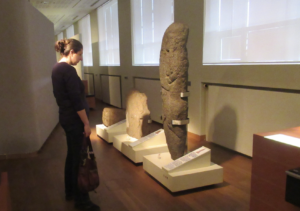 Archaeologists have found statues, carved stone pillars, small everyday items from settlement digs dating from to the 9th and 10th centuries, up to the Middle Ages, when the pagan Norse settlers were converted to Christianity.
Archaeologists have found statues, carved stone pillars, small everyday items from settlement digs dating from to the 9th and 10th centuries, up to the Middle Ages, when the pagan Norse settlers were converted to Christianity.
It was interesting to notice there is a period of time where artifacts were found reflecting both Pagan and Christian interest. It probably took some time to get everyone to church. For one thing, there weren’t many people there and the ones that were there were scattered over distances. It’s not easy to build a congregation if you can’t get folks congregated. That the population was so scattered around the countryside also served to keep them in touch with the spirits and sprites that the ancient Pagan religions said lived in the land and streams around them. Iceland was eventually Christianized, but ancient Paganism continued to exist alongside it. In the book Independent People, set in the early 20th century, the characters are depicted as able to hold both religions in their heads pretty effortlessly, leaning towards monotheism or paganism, whichever most conveniently works for the present moment. Icelanders today are aware of their Pagan roots. When we visited Þingvellir the next day, as Betsy walked down to the parliament site, she was accosted by a young boy about ten years old on a class trip.
Boy: Are you American?
Betsy: Yes.
Boy: Watch out for the trolls, they’ll come for you in the night!
Back at Ingólfurstorg Square, we lunched on sandwiches from a pita stand. Betsy’s pita contained lamb and vegetables, mine had falafel. As before, people were eating outside in what we would call chilly weather. Today, we joined them.
Refueled and refreshed, we went on to the Settlement Exhibition. This is an ongoing archaeological dig of what is believed to be one of the first, of not the actual first, settlement by Vikings in Iceland.
The visit began with a short introductory film. There was also a replica of a board game that early settlers played. The rules for the game were on a laminated cardboard next to a board on the table, and we decided to give it a try.
The board looked like a chess board, but with 11 squares to a side. Dark and light colored playing pieces representing opposing sides were arranged around the edge and in the middle.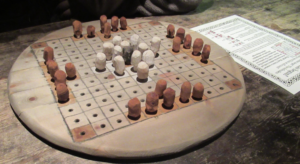 One piece represented a big shot of some sort (King? Chieftain?) in the center square. This one was in a different color from the others. This big shot starts the game surrounded by pieces of one color, soldiers for protection, while the opponents’ pieces are arranged along the sides of the board. Pieces are able to move according to rules. The goal is for the big shot to move to one of the corners of the board before the opponents surround and capture him. It was fun. Back home, I found this is one of a family of games called “Tafl Games.” You can even buy a copy of this game on Amazon.
One piece represented a big shot of some sort (King? Chieftain?) in the center square. This one was in a different color from the others. This big shot starts the game surrounded by pieces of one color, soldiers for protection, while the opponents’ pieces are arranged along the sides of the board. Pieces are able to move according to rules. The goal is for the big shot to move to one of the corners of the board before the opponents surround and capture him. It was fun. Back home, I found this is one of a family of games called “Tafl Games.” You can even buy a copy of this game on Amazon.
The settlement itself is basically a “long house,” looking like a stone version of the long houses built by Native Americans in North America. To my untrained eye, the ruins looked like jumbles of rocks. The curators make clever use of lighting and animated display boards to identify features and objects to make sense of what is there. Very educational, fascinating stuff.
By the end of our tour of the Settlement Exhibition, we had completed lengthy visits to two sizable museums. Typically, I was tired while Daughter was not. We split up. Betsy went on to do some more walking around town while I went back to the hotel, rested my feet, and did some journal writing.
My hearing aid provider had replied to my email asking for information on what kind of device I had, which earpiece was missing, date of purchase, and other details. Some of that information was etched on the one hearing aid I had, with characters much too small to read without a magnifying glass. Here’s a fun fact: If you wear more than one pair of reading glasses together on your nose, the effect of looking through the two lenses is to multiply the magnification factor. So wearing my backup pair of reading glasses with the day-to-day pair, the teeny tiny numbers on the hearing aid were readable.
The highly rated Gandhi Indian Bar & Restaurant was just across the street from the apartment and we walked over for dinner. But they required a reservation. Instead, we made a reservation for the following night and went back to the Kronan supermarket to buy a couple of frozen pizzas to make ourselves in the room.
Can’t go wrong with pizza.
